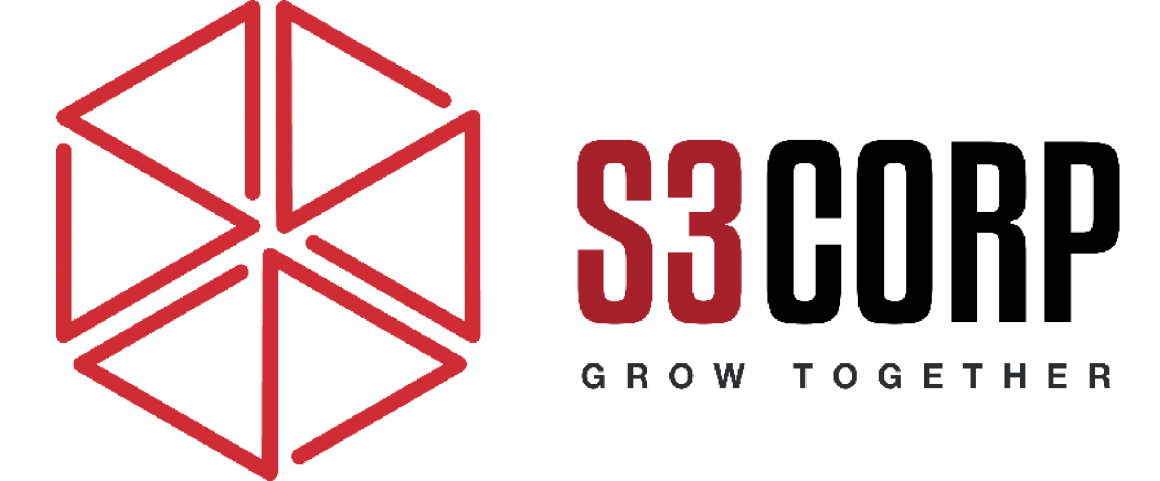Best Practices for Streamlined Software Development
— February 14, 2020Efficient software development is key to success in the tech industry. Whether working alone or in a team, optimizing productivity is crucial to delivering quality products on time. The following tips offer practical strategies to enhance productivity and ensure your software development process is efficient, focused, and effective.
1. Clear Your Work Environment
A clean, organized workspace plays a significant role in maintaining focus and productivity. Distractions are the enemy of efficiency, especially in the tech industry, where complex problem-solving requires full concentration. Start by decluttering your physical workspace. Remove unnecessary items that might distract you or create a sense of disarray. A tidy desk is often linked to a clearer mind, making it easier to stay focused on tasks.
In addition to physical organization, manage digital distractions. Disable social media notifications and filter out unnecessary emails. These constant interruptions can derail your flow and increase cognitive load. For example, if you’re working on code, use tools like StayFocused for Google Chrome, which can block access to distracting sites like Facebook. This simple action can significantly improve your focus and help you stay on track.
Lastly, consider your work environment beyond the desk. If you’re in an office with many people, noise can be a major distraction. Wearing noise-canceling headphones can help create a quiet space in a noisy environment, allowing you to concentrate on your tasks without being interrupted by colleagues or other sounds.
2. Organize Your Priorities
Clear priorities are essential for staying productive. Without a clear understanding of what tasks need to be completed, it’s easy to become overwhelmed or lose focus. Organizing your tasks starts with improving documentation. Keep detailed records of your plans, goals, and progress, and ensure everything is easily accessible to both you and your team. Tools like Trello, Asana, or Jira can help streamline task management by providing a clear overview of what’s pending, what’s in progress, and what’s completed.
A well-organized plan ensures that everyone is aligned on the same objectives, making it easier to avoid confusion or redundant work. Before you end your day, take a few minutes to review your tasks and prepare a list of high-priority items for the next day. This simple habit can help you start your workday with clarity, knowing exactly what needs your attention first. Prioritizing tasks not only helps you stay focused but also reduces the mental effort needed to figure out what to work on next.
By staying on top of priorities and organizing your workload, you ensure that each team member knows their responsibilities and that progress is consistently tracked. This proactive approach saves time and reduces the likelihood of missed deadlines.
3. Plan Your Development Process
Before you dive into writing code, take the time to plan your development process. Many developers often spend hours working through problems without a clear strategy, leading to wasted time and frustration. Instead, start with a plan that defines the project’s structure, key tasks, and milestones.
One effective approach is to break the project into smaller, manageable components. Write modular, reusable code from the outset. This not only makes your code more efficient but also easier to maintain and update over time. For example, when designing a feature, consider creating smaller functions that complete specific tasks. These functions can be reused in other parts of the project, saving you time in the long run and improving the maintainability of your code.
Spend time identifying potential patterns or challenges before you begin coding. This upfront planning helps avoid redundant work and reduces the likelihood of rework. By thinking through the steps and outlining the process, you can set yourself up for smoother, more efficient development.
Using tools like flowcharts or diagrams can also help visualize the development process. These tools allow you to map out your ideas before jumping into coding, ensuring you’re moving in the right direction from the start.
4. Avoid Overworking Yourself
While it’s tempting to put in long hours to meet deadlines, overworking can lead to burnout and decreased productivity. Working beyond your mental limits may seem like a way to get more done, but it often results in mistakes that require more time to fix. The tech industry, in particular, demands constant problem-solving, which can drain your energy if you’re not careful.
Taking regular breaks is essential for maintaining mental clarity and focus. Stepping away from your desk for short breaks throughout the day helps your brain reset and re-energizes you for the tasks ahead. For instance, using the Pomodoro technique—working in 25-minute intervals with 5-minute breaks—can boost focus and productivity while preventing burnout.
Don’t ignore physical health either. Sitting at a desk for long hours can be detrimental to your body. Make a point of standing, stretching, or walking around during breaks. These actions can help alleviate physical tension, improving your overall well-being and productivity.
Overworking also reduces the quality of your work. When you’re tired, you’re more likely to overlook small errors, which can lead to bigger problems down the line. By pacing yourself and taking care of your body and mind, you can maintain a high level of productivity without risking burnout.
5. Evaluate Agile Development
Agile development has become a popular methodology in software development, replacing traditional, linear approaches. Agile focuses on iterative progress, constant feedback, and collaboration among team members. It helps teams remain flexible and adapt to changing requirements as the project evolves.
Agile development encourages breaking large projects into smaller, manageable tasks, which allows for more frequent releases and quicker iterations. This method helps developers identify problems early on and make necessary adjustments without major setbacks. Popular Agile frameworks like Scrum, Lean, and Kanban emphasize continuous improvement and team collaboration, ensuring that the development process stays efficient and adaptable.
To implement Agile effectively, consider using project management tools designed for Agile teams. Programs like Jira, Monday.com, or Trello can help organize tasks, track progress, and maintain visibility of each team member’s contributions. These tools allow for real-time updates, ensuring everyone is on the same page and reducing the risk of miscommunication or delays.
If you’re working with a team, daily stand-up meetings can help keep everyone aligned on the day’s priorities. These short meetings allow team members to share progress updates, raise issues, and adjust plans as needed. By integrating Agile practices into your development workflow, you can streamline the process and foster better teamwork, ultimately improving productivity.
6. Implement Code Reviews
Regular code reviews are an essential part of an efficient software development process. They not only ensure that code quality is maintained but also provide an opportunity for team members to learn from each other and share best practices. Peer reviews can uncover bugs, inefficiencies, or areas for improvement that may have been missed by the original developer. Moreover, code reviews help ensure that the code adheres to agreed-upon standards, making it easier for other developers to understand and work with in the future.
Setting up a systematic review process, where every piece of code is reviewed before it’s merged into the main branch, can catch issues early, saving time and resources down the line. It’s also important to create a constructive feedback culture where developers can learn from critiques without feeling discouraged.
7. Automate Repetitive Tasks
Automation is a key factor in speeding up the development process and improving accuracy. Many tasks in software development, such as testing, deployment, and code formatting, can be automated to save valuable time. Automated testing frameworks like Selenium or JUnit can help run tests quickly and consistently, identifying potential issues before they reach production. Similarly, automating the build and deployment process through Continuous Integration (CI) and Continuous Deployment (CD) pipelines ensures that your code is always ready to be released without manual intervention.
By automating repetitive tasks, developers can focus more on high-level work like feature development or problem-solving. Automation tools help reduce human error, increase consistency, and free up time for more strategic efforts.
8. Focus on Technical Debt Management
Technical debt refers to the trade-off between short-term gains and long-term quality. When deadlines loom, developers may choose quick and dirty solutions instead of taking the time to implement the most efficient or well-structured code. Over time, these quick fixes accumulate, creating maintenance challenges and slowing down future development.
Managing technical debt is critical for maintaining long-term productivity. It’s important to regularly evaluate the state of your codebase and address areas where shortcuts were taken. This may mean refactoring inefficient code or adding documentation where it’s lacking. Proactively managing technical debt prevents it from piling up and ensures that the code remains maintainable and scalable as the project grows.
By dedicating time to manage technical debt, teams can avoid future roadblocks and improve the speed of future development cycles.
9. Improve Communication Within Your Team
Clear, concise, and transparent communication is essential for an effective development process. Misunderstandings or miscommunication can lead to delays, errors, and frustration. Establishing effective communication channels between team members, stakeholders, and project managers ensures that everyone is on the same page and aligned with the project’s goals.
Using collaboration tools like Slack, Microsoft Teams, or Google Meet for regular check-ins, status updates, and brainstorming sessions helps keep everyone in the loop. Clear documentation for processes, expectations, and deliverables also minimizes confusion and sets clear expectations for all team members. Foster a team environment where open communication is encouraged, allowing for quick problem-solving and idea sharing.
Additionally, ensuring that team members feel comfortable asking questions and seeking clarification can prevent small issues from growing into bigger problems. As software development is often a collaborative effort, smooth communication is a key factor in staying productive and avoiding roadblocks.
10. Invest in Skill Development
As technology evolves, so should the skills of your development team. Continuous learning is crucial to staying competitive and maintaining efficiency in software development. Encouraging team members to attend conferences, take online courses, or participate in workshops helps them stay updated on the latest tools, frameworks, and best practices.
Investing in skill development doesn’t just improve individual capabilities—it can improve team collaboration. A team with diverse and advanced skills is better equipped to solve complex problems and implement cutting-edge technologies that enhance the software development process.
Moreover, fostering a culture of learning can increase job satisfaction, as developers are more likely to feel engaged and motivated when they see opportunities for growth. By supporting your team’s professional development, you invest in the long-term success of both your employees and your projects.
11. Use Version Control Effectively
Version control systems like Git are essential in modern software development. They allow developers to track changes, collaborate on code, and revert to previous versions when necessary. However, many teams don’t use version control to its full potential, which can lead to confusion and inefficiencies.
Ensure that your team follows best practices when it comes to version control. For instance, use clear and descriptive commit messages, and follow a consistent branching strategy. This makes it easier for everyone to understand the history of changes and simplifies collaboration. Regularly pushing updates to a shared repository ensures that the latest version of the code is always available to everyone on the team.
Additionally, implementing proper Git workflows—such as Gitflow—can help manage feature development, bug fixes, and releases more efficiently. Having a clear structure for handling code merges and resolving conflicts can prevent errors and streamline the development process.
12. Set Realistic Expectations and Deadlines
Setting realistic expectations and deadlines is crucial for maintaining a steady and manageable workflow. Many software projects fail because teams are either over-ambitious or underestimate the time required for each task. It’s important to break down the project into smaller milestones and allocate sufficient time to each phase.
Incorporating buffer time for unforeseen challenges helps avoid rushing through tasks and compromising on quality. Keep in mind that software development is rarely a linear process, and unexpected issues are bound to arise. By setting realistic timelines, you allow your team to focus on producing quality work without the stress of constantly chasing unrealistic deadlines.
Conclusion
Incorporating these additional tips into your development workflow can lead to significant improvements in efficiency, collaboration, and code quality. From implementing code reviews and automating tasks to managing technical debt and investing in continuous learning, these practices provide valuable tools to streamline your development process.
By following these strategies, you can enhance your development process and ensure you’re consistently producing high-quality software. In a competitive industry, these small but significant improvements can set you apart and lead to better outcomes, both for you and your team. Consider which changes you can implement today to make your software development more efficient.
What practices will you implement to take your software development process to the next level? Consider incorporating these strategies into your daily routine and watch as your productivity and quality improve.





